第125章 SOCIETY AND FESTIVALS(18)
But the religious processions were not only mingled with secular accessories of all kinds, but were often replaced by processions of clerical masks.Their origin is perhaps to be found in the parties of actors who wound their way through the streets of the city to the place where they were about to act the mystery; but it is possible that at an early per;od the clerical procession may have constituted itself as a distinct species.Dante described the 'Trionfo' of Beatrice, with the twenty-four Elders of the Apocalypse, with the four mystical Beasts, with the three Christian and four Cardinal Virtues, and with Saint Luke, Saint Paul, and other Apostles, in a way which almost forces us to conclude that such processions actually occurred before his time.We are chiefly led to this conclusion by the chariot in which Beatrice drives, and which in the miraculous forest of the vision would have been unnecessary or rather out of place.It is possible, on the other hand, that Dante looked on the chariot as a symbol of victory and triumph, and that his poem rather served to give rise to these processions, the form of which was borrowed from the triumph of the Roman Emperors.However this may be, poetry and theology continued to make free use of the symbol.Savonarola in his 'Triumph of the Cross'
represents Christ on a Chariot of Victory, above his head the shining sphere of the Trinity, in his left hand the Cross, in his right the Old and New Testaments; below him the Virgin Mary; on both sides the Martyrs and Doctors of the Church with open books; behind him all the multitude of the saved; and in the distance the countless host of his enemies--emperors, princes, philosophers, heretics--all vanquished, their idols broken, and their books burned.A great picture of Titian, which is known only as a woodcut, has a good deal in common with this description.The ninth and tenth of Sabellico's thirteen Elegies on the Mother of God contain a minute account of her triumph, richly adorned with allegories, and especially interesting from that matter-of-fact air which also characterizes the realistic painting of the fifteenth century.
Nevertheless, the secular 'Trionfi' were far more frequent than the religious.They were modelled on the procession of the Roman Imperator, as it was known from the old reliefs and the writings of ancient authors.The historical conceptions then prevalent in Italy, with which these shows were closely connected, have already been discussed.
We now and then read of the actual triumphal entrance of a victorious general, which was organized as far as possible on the ancient pattern, even against the will of the hero himself.Francesco Sforza had the courage (1450) to refuse the triumphal chariot which had been prepared for his return to Milan, on the ground that such things were monarchial superstitions.Alfonso the Great, on his entrance into Naples (1443), declined the wreath of laurel, which Napoleon did not disdain to wear at his coronation in Notre-Dame.For the rest, Alfonso's procession, which passed by a breach in the wall through the city to the cathedral, was a strange mixture of antique, allegorical, and purely comic elements.The car, drawn by four white horses, on which he sat enthroned, was lofty and covered with gilding; twenty patricians carried the poles of the canopy of cloth of gold which shaded his head.
The part of the procession which the Florentines then present in Naples had undertaken was composed of elegant young cavaliers, skillfully brandishing their lances, of a chariot with the figure of Fortune, and of seven Virtues on horseback.The goddess herself, in accordance with the inexorable logic of allegory to which even the painters at that time conformed, wore hair only on the front part of her head, while the back part was bald, and the genius who sat on the lower steps of the car, and who symbolized the fugitive character of fortune, had his feet immersed in a basin of water Then followed, equipped by the same Florentines, a troop of horsemen in the costumes of various nations, dressed as foreign princes and nobles, and then, crowned with laurel and standing above a revolving globe, a Julius Caesar, who explained to the king in Italian verse the meaning of the allegories, and then took his place in the procession.Sixty Florentines, all in purple and scarlet, closed this splendid display of what their home could achieve.
Then a band of Catalans advanced on foot, with lay figures of horses fastened on to them before and behind, and engaged in a mock combat with a body of Turks, as though in derision of the Florentine sentimentalism.Last of all came a gigantic tower, the door guarded by an angel with a drawn sword; on it stood four Virtues, who each addressed the king with a song.The rest of the show had nothing specially characteristic about it.
At the entrance of Louis XII into Milan in the year 1507 we find, besides the inevitable chariot with Virtues, a living group representing Jupiter, Mars, and a figure of Italy caught in a net.
After which came a car laden with trophies, and so forth.